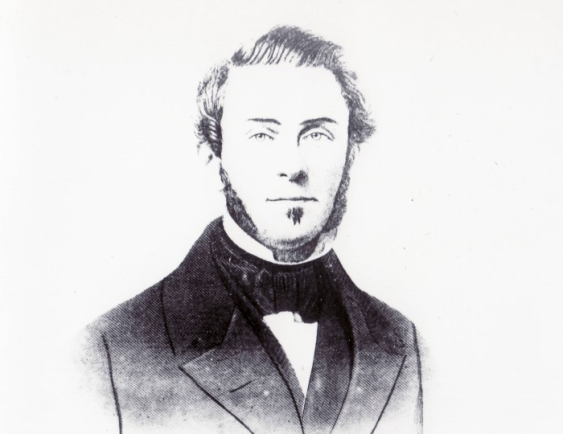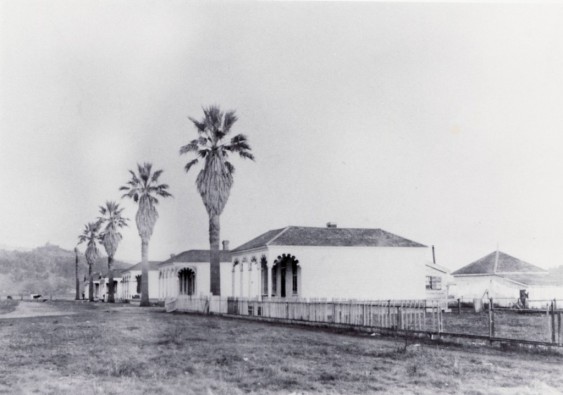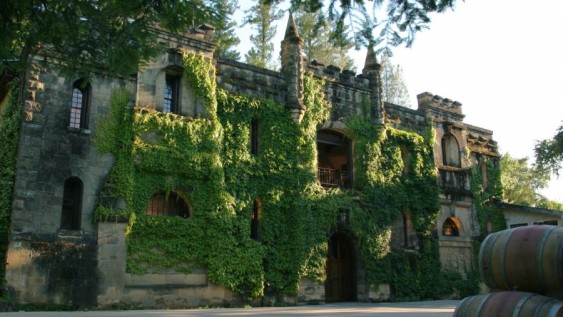In the annals of wine lore, there are plenty of fascinating stories and happy accidents, including the invention of late-harvest Riesling. However, one of my favorites involves a dipsomaniacal entrepreneur, natural hot springs, and a slip of the tongue that has left its mark on California’s wine map for over 150 years.

A former Mormon, Sam Brannan became one of the wealthiest men in California. Photo courtesy of the Brannan Cottage Inn.
Sam Brannan was born a Mormon in Maine in 1819 and after a checkered early career in newspapers and other businesses, he and about 240 other members of his church arrived in San Francisco to start a new life there.
It wasn’t long before Brannan began publishing a newspaper called the California Star and had his hand in other enterprises including hotels, flour mills and various general stores…including one in Sutter’s Fort where gold was discovered in 1848, which the Star promptly announced with splashy headlines.
In the years that followed, through quite a bit of capitalistic savvy (such as buying up all the shovels and picks in the area then reselling them to miners at exorbitant prices) as well as not a little subterfuge including cases where he was accused of diverting church funds, Brannan became one of the wealthiest people in California, with significant landholdings in San Francisco, Sacramento and beyond. Perhaps unsurprisingly, Brannan is also said to have broken with the Church of Latter Day Saints…though at the same time, he seems to have developed a particular affection for spirits and philandering.
By 1859, Brannan had bought up 3,000 acres of land north of San Francisco in what is now Napa Valley, specifically in an area he hoped to develop as a spa destination for San Francisco’s nouveaux riches thanks to the natural hot springs there. Brannan invested the princely sum of $500,000 building it, including bathhouses, restaurants, a dance hall and even a skating pavilion. He opened the resort in 1862 with a three-day party for 3,000 guests.

Brannan spent nearly half a million dollars developing the area. Photo courtesy of the Brannan Cottage Inn.
As legend has it, while bragging about his vision after a few drinks one evening, Brannan was attempting to toast the destination as “the Saratoga of California.” But because he had imbibed too much, he ended up saying it would be “the Calistoga of Sarafornia.” And the name stuck.
Unfortunately, Brannan’s fortune did not. After a series of bad investments, including the Napa Valley Railroad in 1864, and a divorce settlement in 1870 that had to be paid out in cash and forced him to liquidate most of his holdings including his stake in Calistoga, Brannan was financially ruined. He spent the next 20 years trying to regain his fortune in Mexico and Arizona, but eventually died penniless in San Diego in 1889.
Though few remember Brannan now, the town of Calistoga is his lasting legacy, and one of the country’s premier wine-producing areas. You can actually stay at the gorgeous little Brannan Cottage Inn in town, which was built by Brannan himself in 1860 and later owned by railroad magnate Leland Stanford.

These days, Calistoga is home to famous wineries like the iconic Chateau Montelena. Photo courtesy of Chateau Montelena.
While you’re there, spend an afternoon soaking in the hot springs and mud baths at Indian Springs, and consider a visit to landmark wineries including Chateau Montelena to see its lovely grounds and sample its famous wines, Schramsberg Vineyards for some of Napa’s best-known sparkling wines, and take the cable car at Sterling Vineyards for spectacular views of the valley.

